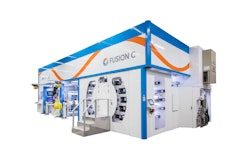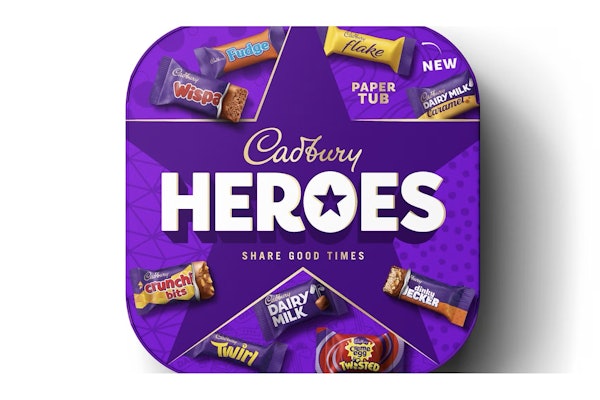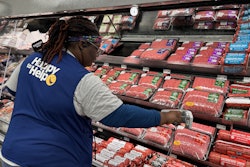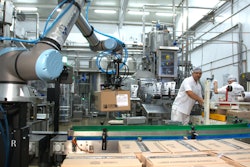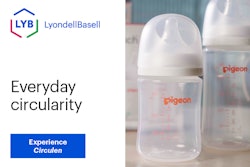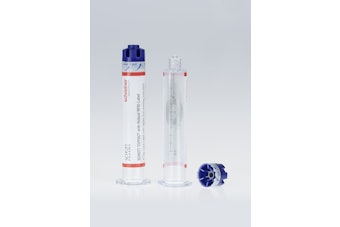Quick hits:
- With high MOQs, printed cans are tough for small batch and seasonal brewers
- Labeled cans, either p-s or shrink, are one way to get great shelf appeal without printing cans
- MRFs have sustainability and recyclability concerns around putting labels on cans, particularly with adhesive
- Shrink PETG can be fairly easily removed from cans by the consumer, but it helps if they actually do it
- Meanwhile, digital printing technology, direct to aluminum cans, is developing and may soon have its day in the sun
Related to this episode:
- Packaging World's case study on Pelican Brewing Co., whose fast filling operations soon necessitated end-of-line palletization automation.
- Collective Arts Brewing's shrink solution for cans lets artist-inspired labels shine.
- Report by Packaging World on Tonejet's electrostatic drop-on-demand can printing technology.
- Craft brewers say that when aluminum cans all of a sudden become a must-have format, the canning equipment first installed to meet the sudden demand soon proves inadequate.
- Visit Packaging & Processing Women's Leadership Network to learn how this program is dedicated to advancing women's careers in the industry.
 | Read the transcript below: |
Hello, I'm Matt Reynolds, editor of Packaging World Magazine, back with another edition of Take Five with Packaging World.
Today I've got craft brew on the brain, because I had just received an email reminding me about the Denver Craft Brew Conference coming up in September. Of course, we missed out on last year’s San Antonio conference due the pandemic and that got me thinking about the huge impact that the pandemic had on craft breweries and their packaging operations. Some of it was positive, people overall are drinking more beer and wine cooped up in their houses for extended periods of time and not able to socialize with one another. But at the same time there was a major negative impact, in that the food services and taprooms—two major channels that these craft breweries rely upon—were closed down for extended periods of time. And even when they were reopened, it was for only a certain percentage of capacity.
So what that really did is it put a lot of pressure on the packaging systems for retail packages for these craft brews. Instead of the full kegs and barrels that they were selling to restaurants, they were really relying on the six packs all the way up to 24 packs and multiple formats. And formats is kind of the name of the game here because craft brew is known for not having one 12oz printed can going out a million times. Basically, they're doing a lot of collaborations with friendly breweries, they're doing seasonal items around Christmas or Thanksgiving. They've got a lot of variety that say InBev or Molson Coors aren't going to be dealing with. And one thing that comes with that much variety is what you're able to print on cans. Buying printed cans like a Coca-Cola, or even a Budweiser in this context, you're going to have a minimum order quantity (MOQ) from the big printed can manufacturers that could be in the hundreds of thousands. Actually I think 50,000 is still considered a fairly small MOQ, but for a craft brewery, that's a huge number.
So frequently craft brews rely upon either shrink sleeving or pressure sensitive labels. Now pressure sensitive labels I'll get to first because there's a lot of interesting things that can be done with the tactile feel, whether it's a matte or a gloss finish—I've even seen some that are almost like a fuzzy tactile sensation. But there is a drawback in that they're not exactly the most friendly for the material recovery facilities (MRFs), and so on. So when they're trying to be recycled it's not like a straight printed aluminum can that can just go straight through the aluminum stream.
That adhesive layer is holding the plastic pressure sensitive label on, and that can be a problem. Slightly less onerous for the recycling stream is a shrink sleeve because with the shrink label there's no actual adhesive, so that can be removed—but both of them do involve a layer of plastic. Regardless, there's one interesting brewery up in Hamilton, Ontario that is using shrink sleeves to its advantage and doing so in a way that isn't so bad for the MRFs.
So the brewery I was going to mention prior to our break there was called Collective Arts Brewing. It’s in Hamilton, Ontario. And like a lot of craft breweries they are dealing with small quantities, seasonal, or sometimes a collaboration with a fellow brewery. A lot of those are in such small quantities they aren’t going to be using printed cans, or at least not a lot of their varieties are going to have printed cans. They looked to shrink sleeve as their best option, because there’s another element about Collective Arts Brewing that’s particularly interesting, in that Collective Arts actually refers to the fact they’re getting the designs and the artwork for their cans from artists throughout Canada and actually throughout the world.
In order to make that art really stand out and shine, they wanted the neck and the toe of the can to be covered with the shrink sleeve, which isn’t really done with the pressure sensitive type of label. To make sure they got the best and the most accurate printed label directly on that can—and they’re doing mostly 12 and 16oz cans—they turned to PDC, which is a shrink sleeve applicator which they found to be really high end for their needs. Particularly because that particular machine doesn’t really use knives, it actually uses a micro-perf around the edge of the roll stock and that roll stock’s mandrel form drops over the can itself and then at that micro-perf on the bottom and the top (the toe and the shoulder) it then goes into the heat tunnel and the entire can is completely covered by the beautiful artwork. So is that one method that is going to last quite some time for them and they made the purchase just recently expecting for it to last decades to come.
But there’s another technology that’s going through its paces of Moore’s Law—which is to say that it starts out expensive and not so great and it then begins less expensive as the quality goes up. And that’s actually digitally printing directly on cans. So that takes away the need for MOQ, as essentially you could have a can for every single beer that you make. You can have somebody’s birthday and order fifty cans, with their names on it or something along those lines. But for craft brew, the amount of cans is still going to be in the hundreds of thousands.
Regardless, right down the road in Montreal is Solucan. That’s one of the first adopters of Tonejet technology. Tonejet uses electrostatic drop-on ink technology in CYMK. Very thin, so it doesn’t take a ton of ink. So you’re able to essentially print on a can in the volumes that you need. It’s still a new technology, it’s got a ways to go. However, just as March 30th, 2021, the second Tonejet was bought by Bevcraft Group—that’s an Irish supplier of cans—and again this is hitting those MOQs of one to 50,000.
So even though it’s a young technology and, like I said, it’s subject to Moore’s law, watch for that in the next few years as printed cans come out throughout the craft beverage industry. Thanks, and that’s been another edition of Take Five.




